
Plum production has its ups and downs. You will never harvest the same amount from year to year.
One summer you will harvest buckets and bowlfuls of the sweetest purple gems, the next year just a few sad, bitter, wrinkly little things.
That is life in the world of fruit production. Just in case you are thinking of planting an orchard…
If you stop to think about it, many crops act this way, especially in the realm of perennial fruit trees.
So, when a bountiful plum harvest is yours for the picking, take advantage of it and preserve as much plum jam as you have jars and pantry space for.
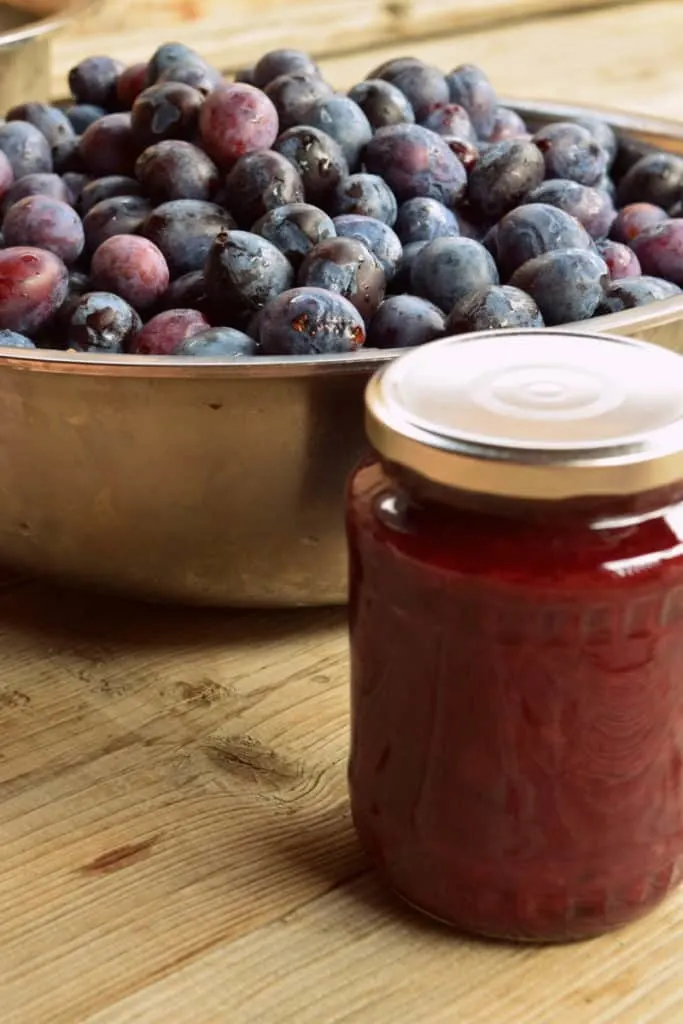
Plums are known to produce a generous crop one year, then they take a year off of fruiting – or sometimes 2!
This is called alternate or biennial bearing, and there is nothing unnatural about it. Apples and pears often stick to this routine too.
Give yourself quite a few seasons of close observation and jot down your findings in a notebook, so that you too, can follow the rhythms of nature.
Pruning your plum tree step-by-step
While winter pruning is recommended for many fruit trees, you will find that plum trees are best pruned in late summer/early fall.
Apple trees are among the easiest, and most forgiving, trees to prune, but plums are just as easy. Learn how to trim one and the rest will be easy, as the base principles of pruning are the same.
One simple step that often goes missing is this: prune your fruit trees on a dry, sunny day.
It is only logical that you wouldn’t want to work out in the rain, the tree doesn’t like it either.
Step 1 – Examine the tree with a critical eye
Take a step back and look at the shape and structure of the tree.
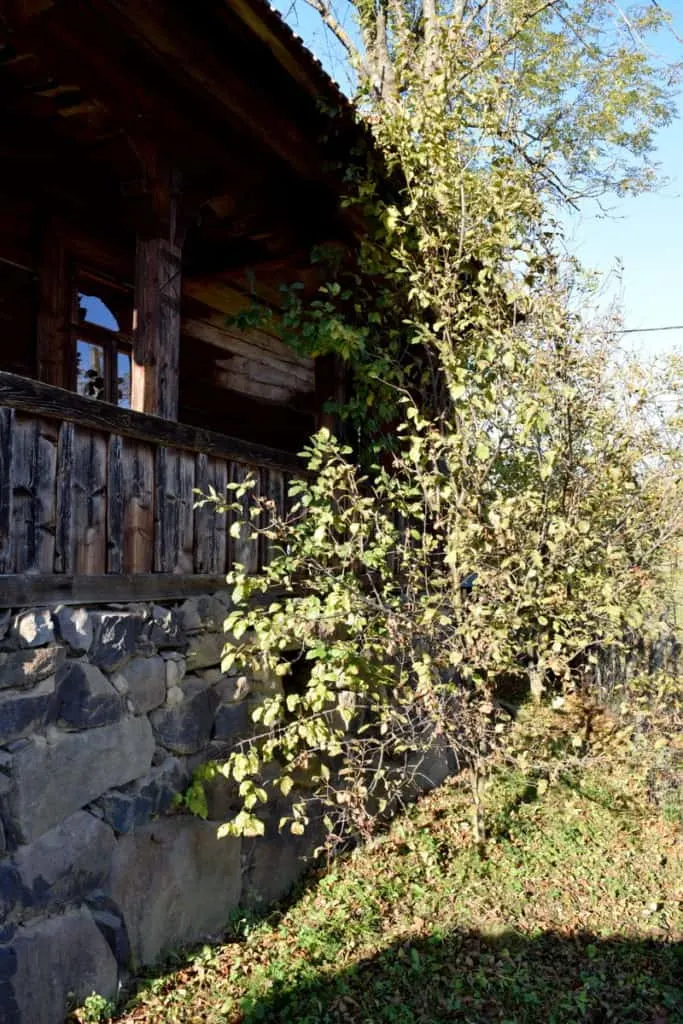
Is it touching anything that it shouldn’t (a building, another tree, wires, etc.)?
Are there overlapping (crossing) branches? Branches that rub on one another may be the future sites of diseased wounds.
Do the branches tend to lean too heavy on one side?
Does the location of the tree call for it to be limbed up?
Step 2 – Develop a pruning plan
Start with identifying and eliminating the 3D’s.
The dead, diseased and dying wood (if there is any).
On plums you may need to look out for silver leaf disease and bacterial canker.
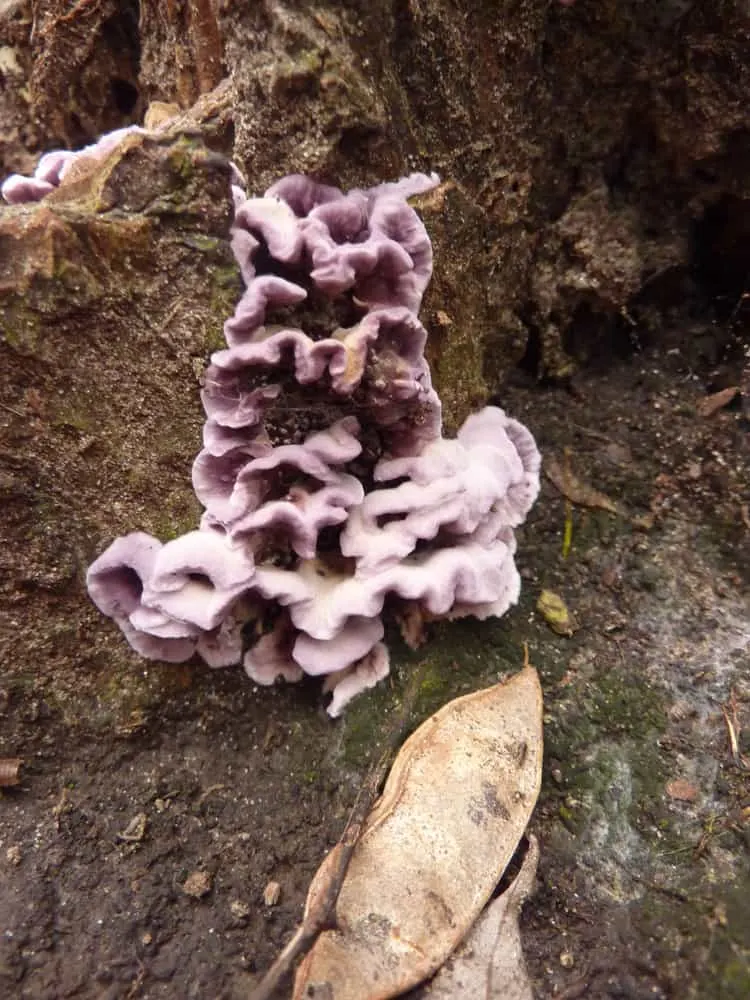
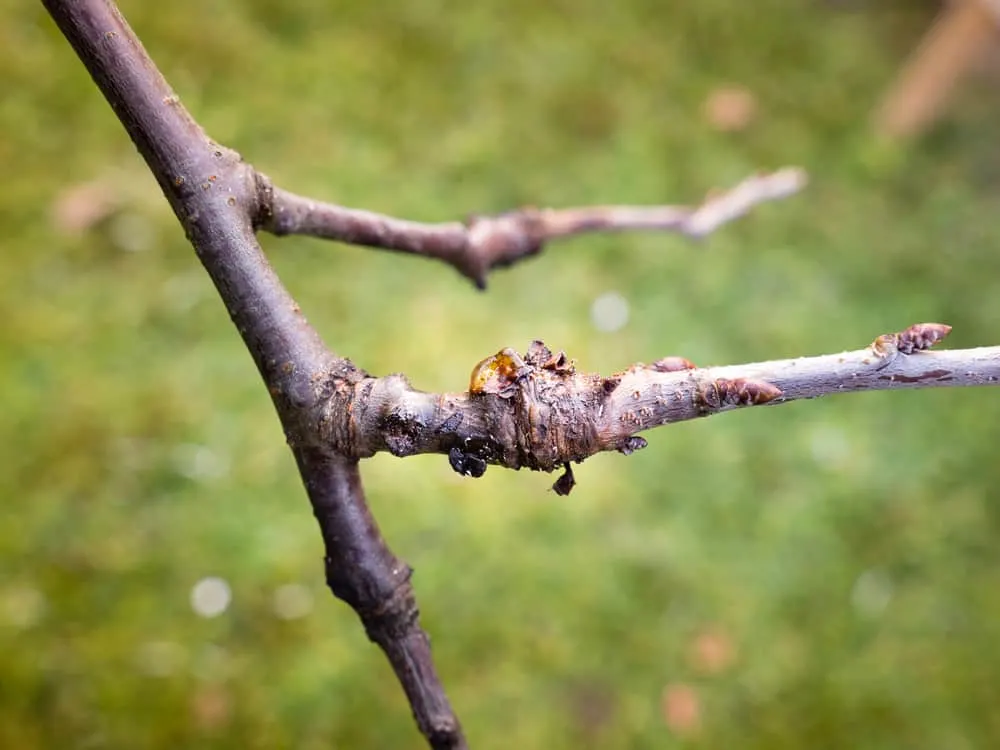
Once you’ve done that, begin pruning at the bottom of the tree and work your way up to the top as you remove branches to increase air circulation and benefit the overall health of the plum tree.
Step 3 – Learn to make clean cuts
When pruning, make as few cuts as possible to achieve your end goal.
In order to do this, make sure that your most trusted pair of pruners (these are ours) are sharp, and that your loppers and handsaw are too.
Use the proper tools for the right girth and density of wood, and your pruning job will be easy and enjoyable.
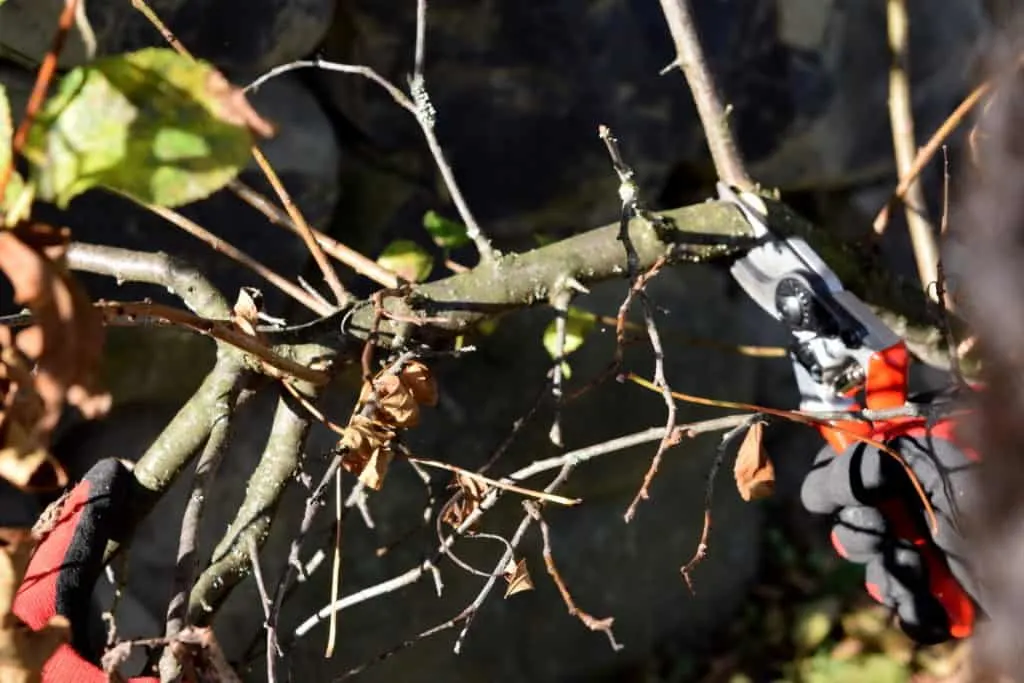
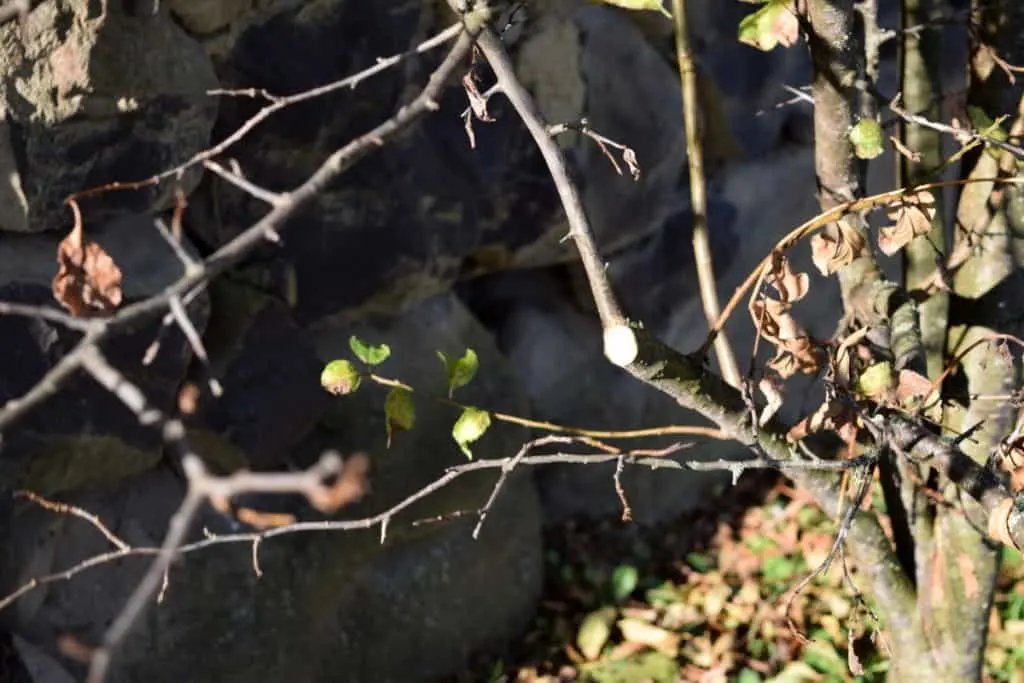
Once you get the hang of it, you can prune a single fruit tree in 15 minutes or less, depending on size of course.
While you are pruning, always cut back just before a bud or side-branch when cutting a branch, making sure that the angle of the clear cut slopes away from the bud or branch you are cutting back to.
If pruning a fruit tree back to the main trunk, cut as close as you can, without cutting into the raised collar. Never leave an odd branch sticking out in hopes that it will bear fruit – cut it out entirely to prevent disease.
Step 4 – Work your way up the tree
As you reach up into the higher branches with the help of a ladder, or another creative way, you will be trimming back the shape of the tree. Do this to encourage the branches to become thicker as they grow – as opposed to long and thin.
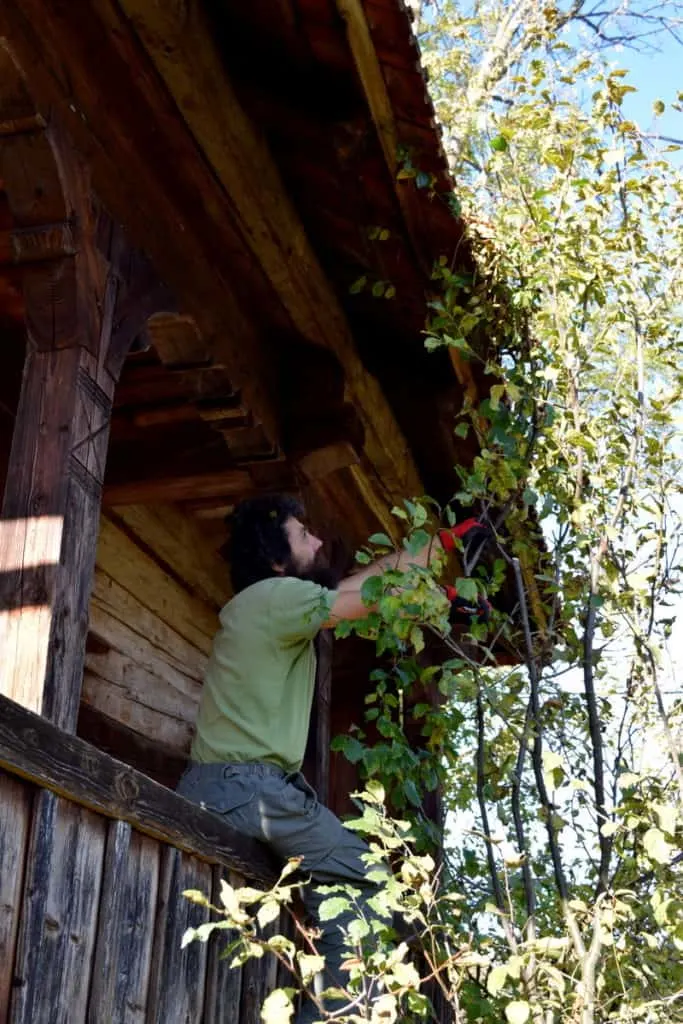
This process of “heading back” will help keep the branches from snapping under the weight of future fruit production.
It also activates the tree’s hormones to produce fruit lower in the canopy, hopefully making for easier to reach fruit!
Step 5 – Clean up
When you are satisfied with how open the fruit tree is, it is time to stop and admire your work.
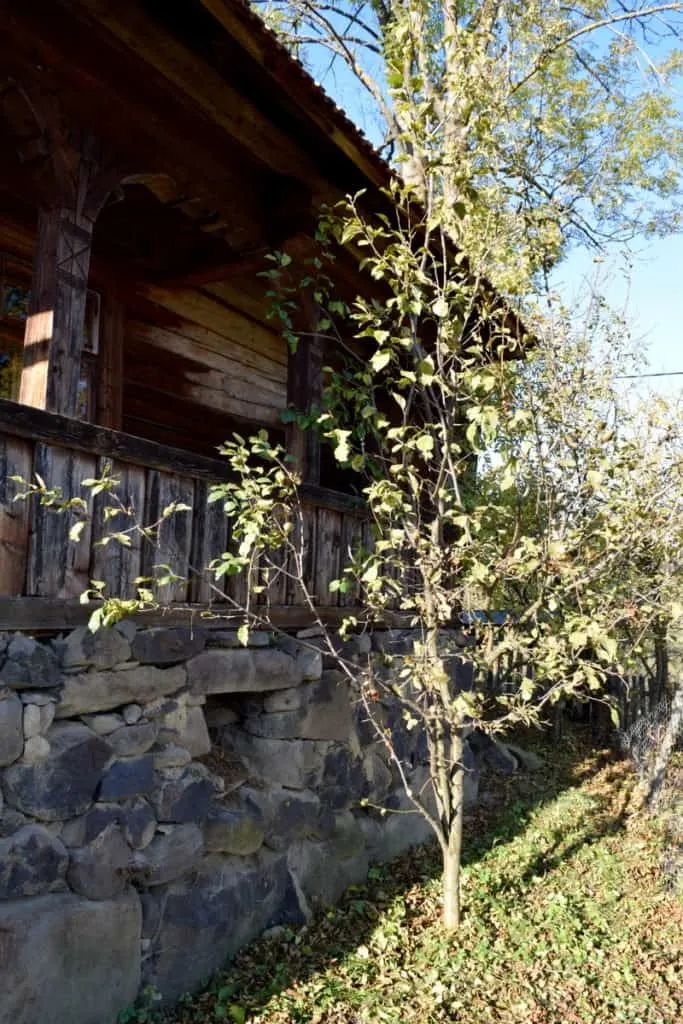
Do not use a wound paint or wrap to seal the pruning wounds. Let the branches heal naturally, on their own, exposed to the air.
Clean up all of the branches, watching out for thorns, and dispose/burn any diseased material.
Make sure to clean your pruners and other hand tools as well, to prevent spreading diseases, by dipping the blades into a solution of isopropyl alcohol for about 30 seconds before moving onto the next tree.
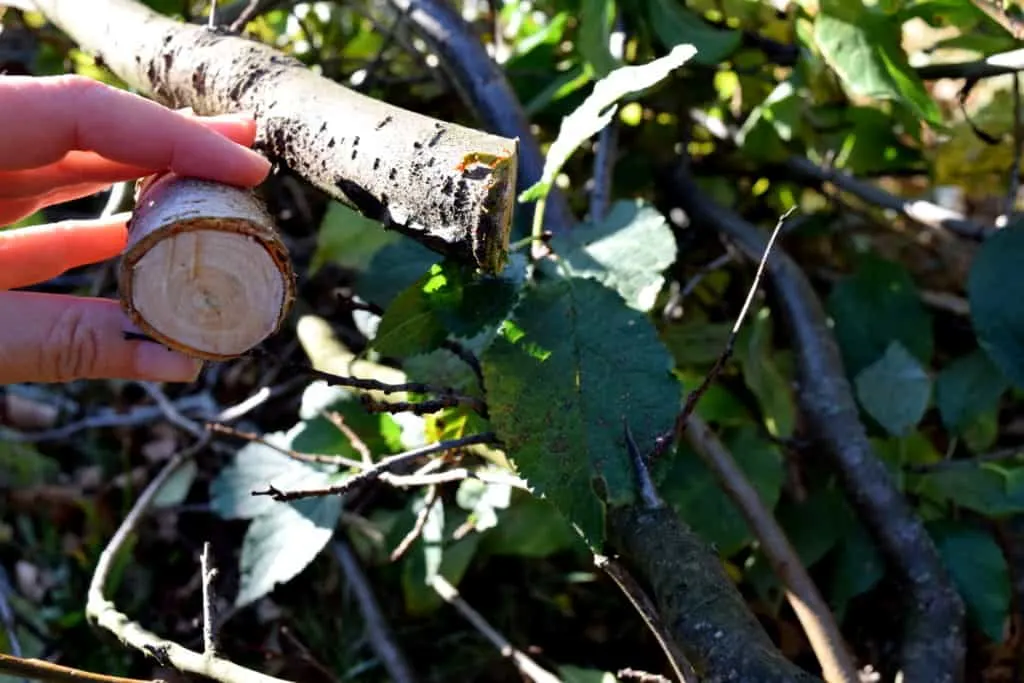
To learn more about shapes of fruit trees, types of pruning cuts, tree vigor, flower buds and more, check out the pruning guide from The University of Maine for detailed information.
5 reasons to prune your fruit trees
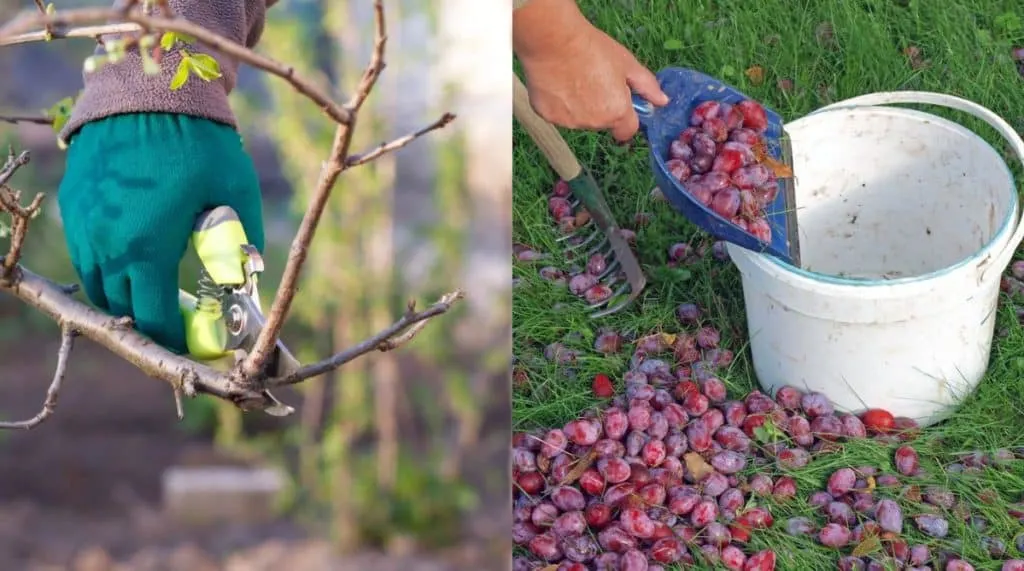
Below are a handful of reasons why you might want to prune (and lend a helping hand to) your fruit trees, rather than leave it all up to nature – and chance.
1. To develop a desired shape
Pruning your plum tree helps to balance out the branch structure and give it a characteristic shape.
Bush and pyramid plums come immediately to mind, fan training is another aspect of pruning whereby the tree is trained against a wall or fence, with horizontal wires to hold the branches.
Other times, you may just need to remove lower branches to mow under the tree, or to prevent it from scraping against a house or outbuilding.
2. Maintain a certain size
Trees that become too tall are difficult to harvest from without a ladder, and in the case of plums, the branches are not strong or pleasant enough to climb in (think of the often serious size thorns).
You can, however, shake the tree when the plums are ripe, for an easy harvest.
Branches that spread too wide, perhaps from lack of sunlight, will weaken when laden with heavy fruit. Keep them pruned back for strength and resilience. Or else, nature will show you what the right size is for any particular tree, when those heavily loaded branches snap off from the rest.
Whatever you choose, just do not underpin branches, limbs with Y-stakes, because these send wrong weight distribution signals to the tree, which may lead to weak growth as years go by.
3. Allow sunlight to reach the trunk and improve air circulation
Improving sunlight penetration by shaping and thinning, will help to produce healthy buds. This, in turn, increases fruit quality by allowing it to fully ripen in the sun.
At the same time, allowing sufficient airflow helps to remove excess moisture, reducing the chance of fungal infections that plums are prone to.
4. To encourage new shoots and strengthen existing branches
If you have a tree that hasn’t been pruned in ages, or who knows how long(!), chances are that a little pruning revival will help it immensely.
Clipping back the ends of branches will stimulate new growth, increasing your chances of a wonderful fruit harvest next season.
5. Remove dead, broken or diseased branches
Pruning in summer allows you to easily remove all of the dead, damaged and diseased fruit tree limbs – as you can see it all while the healthy branches are full of leaves and fruit. In winter, it is a bit trickier, though still an optimal time for pruning.
Removing dry branches is a preventive plan, to minimize the chance that they will fall out on their own, damaging other branches along the way, for instance in stormy weather.
How often to prune your plum trees?
There are several rules of thought on how often to prune your fruit trees.
Some people prune young trees at planting time, then trim them yearly.
However, if you start out with a good branching structure in the first years, light pruning will only be necessary at intervals – even every 5 years or so.
Keep those pruning cuts to a minimum and let the sunlight shine all the way to the trunk, to harvest the best fruit around!

Get the famous Rural Sprout newsletter delivered to your inbox.
Including Sunday musings from our editor, Tracey, as well as “What’s Up Wednesday” our roundup of what’s in season and new article updates and alerts.

